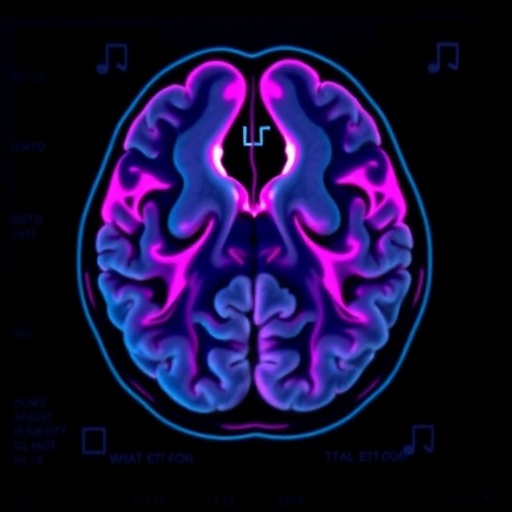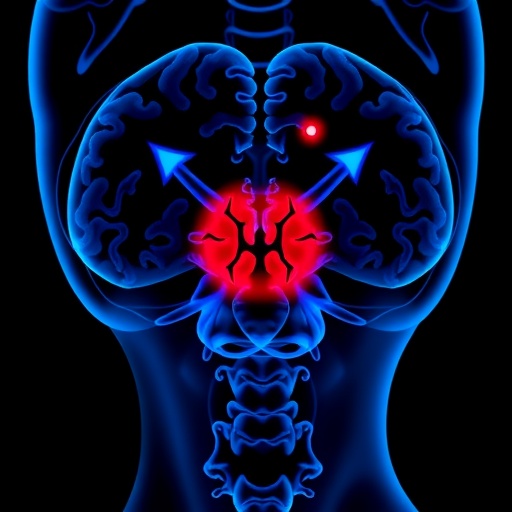
In an era dominated by digital communication, the emotional expressions shared on social networks offer an unprecedented window into the mental health struggles of vulnerable populations. Recognizing this potential, a groundbreaking study has harnessed the power of transfer learning to develop a sophisticated depression detection model specifically tailored for female breast cancer patients. Breast cancer, being one of the most prevalent cancers worldwide, imposes not only physical but profound psychological burdens, with depression emerging as a critical yet often undetected comorbidity. This new research addresses a pressing gap: how to non-invasively and accurately identify depression through analysis of patients’ self-expressed texts on social media and other platforms.
The study begins by acknowledging the unique position of social networks as a safe haven where breast cancer patients express personal and often raw emotions that may be difficult to disclose in face-to-face interactions. However, the unstructured and vast textual data present formidable challenges for mental health professionals seeking to interpret these narratives. Manual analysis is not only time-consuming but also prone to subjective bias. To circumnavigate these challenges, the research team turned to transfer learning—a cutting-edge technique in natural language processing that leverages knowledge gained from large data sources to improve performance on specialized tasks.
At its core, transfer learning allows models trained on one dataset to be fine-tuned for tasks in related but distinct domains. In this case, the researchers utilized a BERT (Bidirectional Encoder Representations from Transformers) model, which had initially been pre-trained on a depression-related corpus sourced from Weibo—a popular Chinese social media platform. This pre-existing knowledge base was then adapted through fine-tuning with clinical texts obtained from a cohort of breast cancer patients. The innovative approach enables the model to grasp the nuanced linguistic and emotional subtleties characteristic of clinical depression in this specific demographic.
.adsslot_JekBEG8MOR{width:728px !important;height:90px !important;}
@media(max-width:1199px){ .adsslot_JekBEG8MOR{width:468px !important;height:60px !important;}
}
@media(max-width:767px){ .adsslot_JekBEG8MOR{width:320px !important;height:50px !important;}
}
ADVERTISEMENT
The methodological framework underpinning the study was rigorous and multifaceted. A mixed-methods design combined qualitative content analysis alongside advanced deep learning techniques. Researchers enrolled 300 women diagnosed with breast cancer, including both inpatients and active online users. Depression status was quantitatively assessed through the Self-rating Depression Scale (SDS), a well-validated instrument, ensuring the reliability of ground truth labels. Following this, self-expressed textual data were collected, meticulously preprocessed, and manually annotated for depression status, resulting in a robust corpus tailored to the target population.
Delving deeper into the linguistic analysis, the research team performed content analysis to reveal key language features associated with depression. This step not only enriched the annotation process but also provided insights into the distinct emotional and cognitive patterns exhibited by depressive patients. Notably, significant divergences were observed concerning negative life attitudes, providing a psychosocial lens through which depression manifests in textual form among breast cancer sufferers.
The technical prowess of the model is evident from its performance metrics. Employing five-fold cross-validation to ensure statistical rigor and generalizability, the model attained an impressive accuracy of 86.67%, with an F1-score of 0.79, reflecting balanced precision and recall. Moreover, the model underwent adversarial testing—where intentional perturbations such as word replacements, misspellings, and deletions were introduced—to evaluate its robustness against natural language noise, a common issue in user-generated social media texts. Although the model exhibited resilience, the study identified the practical necessity for integrated spelling correction mechanisms for deployment in real-world clinical environments.
Beyond the numbers, the study unveiled critical psychosocial factors correlated with depression incidence within the patient cohort. Among these, financial burden and advanced cancer stage emerged as statistically significant contributors. This multidimensional understanding underscores the complex interplay between socioeconomic stressors, disease progression, and mental health, supporting the model’s relevance to holistic patient care.
One of the study’s remarkable innovations lies in its culturally adapted approach. By combining pre-training on social media data with fine-tuning on clinical texts, the researchers bridged a critical gap between informal emotional expression and formal medical evaluation. This hybrid strategy permits scalable, non-invasive depression screening that transcends traditional cultural barriers impeding emotional disclosure in clinical settings, especially in societies where stigma around mental health persists.
The implications of this model extend far beyond lunging at algorithmic advances. Providing clinicians and mental health professionals with a scalable tool for early depression detection could dramatically alter patient trajectories. Timely identification enables prompt psychological intervention, ultimately improving quality of life and possibly even clinical outcomes by addressing the psychosocial dimensions of breast cancer care proactively.
Looking ahead, the researchers advocate for expanding the model’s applicability by incorporating greater demographic diversity. Current results, though robust, stem from a relatively homogeneous sample. Incorporating a wider range of age groups, ethnicities, and geographic locales would enhance the model’s generalizability and equity in healthcare delivery. Furthermore, the integration of multimodal data—such as speech patterns, facial expressions, or physiological signals—could create a richer, more comprehensive picture of mental health status, pushing the boundaries of digital psychiatry.
From a technical perspective, this study represents a frontier in clinical natural language processing applied to oncology support care. The fusion of social media-derived language representation with clinical fine-tuning exemplifies a scalable paradigm for mental health assessment, especially critical as digital health records and patient-generated data continue to proliferate in the healthcare ecosystem. This approach also sets a precedent for analogous applications in other chronic illness populations facing emotional challenges.
Crucially, the model’s reliance on transfer learning highlights the transformative potential of leveraging large, publicly available datasets to tackle specialized clinical problems. Rather than building models from scratch, researchers can capitalize on pre-existing linguistic knowledge while tailoring systems to respond sensitively to patient-specific contexts. This efficiency addresses one of the largest bottlenecks in healthcare AI—the scarcity of high-quality labeled clinical data.
While the study heralds significant advances, it also identifies areas warranting further research. For instance, the necessity to incorporate reliable spelling correction signals a gap between academic model performance and real-world usability. Addressing such challenges is indispensable for transitioning innovative prototypes into clinic-ready tools. Moreover, ethical considerations regarding privacy, consent, and data security surrounding the use of patient texts must remain at the forefront of future developments.
In summary, this pioneering research illuminates a pathway toward harnessing artificial intelligence and transfer learning in transformative ways to confront the silent epidemic of depression accompanying breast cancer. By capitalizing on patients’ self-expressed textual data, the model offers an unprecedented, culturally sensitive, and accessible approach to mental health screening. The promise of this model lies not merely in its technical metrics but in its potential to fundamentally reshape how emotional well-being is integrated into comprehensive cancer care.
As digital health continues its rapid evolution, interventions like this signal a future where machine learning seamlessly augments human compassion and clinical expertise. Breast cancer patients, often navigating the dual hardships of physical illness and psychological turmoil, could soon benefit from timely mental health insights derived from their own words. This fusion of technology, empathy, and clinical acumen may redefine survivorship, emphasizing holistic healing in the most personal terms imaginable.
Subject of Research: Development of a transfer learning-based text sentiment analysis model for detecting depression in female breast cancer patients.
Article Title: Construction of a transfer learning-based depression detection model for female breast cancer patients: text sentiment analysis.
Article References:
Fu, J., Deng, S., Zheng, W. et al. Construction of a transfer learning-based depression detection model for female breast cancer patients: text sentiment analysis. BMC Cancer 25, 1307 (2025). https://doi.org/10.1186/s12885-025-14650-7
Image Credits: Scienmag.com
DOI: https://doi.org/10.1186/s12885-025-14650-7
Tags: challenges in analyzing patient narrativesdepression detection in breast cancer patientsdigital communication and mental healthemotional expression in breast cancer survivorsimproving mental health diagnosticsmachine learning for depression identificationnatural language processing for mental healthnon-invasive depression screening methodspsychological impact of breast cancersocial media analysis for mental healthtransfer learning in mental healthunderstanding comorbidities in cancer patients





